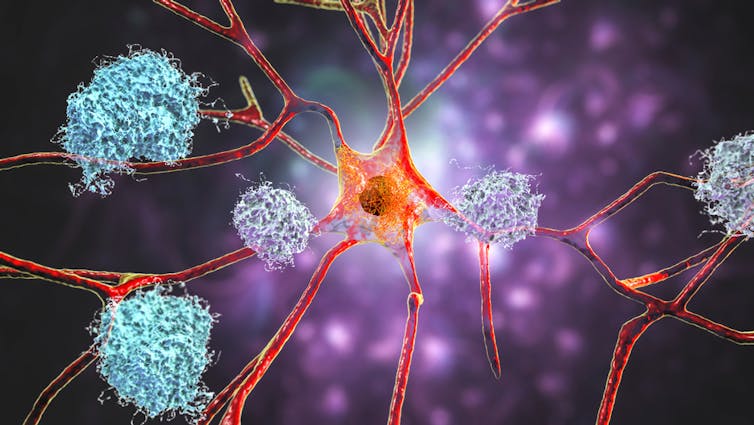LightField Studios/Shutterstock
A scientist-cum-detective has presented evidence that images used to support the case for amyloid protein being the main protagonist in Alzheimer’s disease appear to have been fabricated.
It began as an investigation into an experimental Alzheimer’s drug, Simufilam, but quickly snowballed into something much bigger. The investigation identified more than 20 suspect papers from the same researcher, ten of which related to this specific protein.
The initial research paper that came under scrutiny was published in 2006 in the journal Nature. Since publication, it has been cited over 2,000 times by other scientists to support their own work.
The journal is currently investigating these concerns and has advised caution in interpreting the data. In addition to this 2006 paper, other research papers published by the same author have come under scrutiny from fellow scientists on PubPeer – a website that lets scientists discuss and review scientific research after publication.
These revelations call into question scientific integrity and the role of amyloid in the pathology of Alzheimer’s disease. But how bad are these revelations?
Beta-amyloid was identified in 1984 and is now recognised as a major constituent of the brain plaques that were first described by Alois Alzheimer, a German pathologist, early in the 20th century.
This beta-amyloid protein likes to aggregate into sticky clumps, and research has shown the construction of these aggregates in impressive detail in the lab. The identification of this protein led a wave of research to uncover the role amyloid plays in the brains of people with and without Alzheimer’s disease.
In 1992, this research led to the proposal of an amyloid cascade hypothesis to explain the mechanisms of how the disease takes hold. First comes the accumulation of beta-amyloid, and then what follows (for example, nerve-cell death) is a result of this deposition.
This hypothesis led to the development of an array of anti-amyloid therapies that have progressed to clinical trials but so far have disappointed the Alzheimer’s community.
Despite the recent revelations, it’s clear that beta-amyloid does contribute to the disease – this is supported by genetic evidence. What is less clear is what other factors come together in someone’s brain that lead to a diagnosis of Alzheimer’s disease.

Kateryna Kon/Shutterstock
A specific type of beta-amyloid
The 2006 study in question was examining mouse brains and reported that a specific type of the beta-amyloid protein, namely Aβ star 56 (Aβ*56), underpinned the cognitive deficits seen in the mouse model of Alzheimer’s disease. This put the Aβ*56 form of the protein in the sights of scientists searching for new Alzheimer’s drugs.
They believed that preventing the accumulation of Aβ*56 could potentially slow cognitive decline in people with Alzheimer’s disease. However, the new report published in Science indicates that there may have been image tampering in the original paper, and the images presented were not what they were reported to be.
The detective work uncovered what appears to be altered or duplicated images to better fit the hypothesis rather than being a true reflection of the experiments outlined in the research paper. Subsequent research on beta-amyloid peptide in human samples has failed to detect Aβ*56 form.
These revelations may discredit the work of an individual but do not bring the Alzheimer’s field to its knees.
It is true to say that research funds have been misdirected, but the story of beta-amyloid would have developed with or without the data in question. Still, to this day, scientists are trying to detect relevant levels of beta-amyloid subtypes in blood.
Image manipulation is not rare
While it is disheartening as a scientist to hear about this alleged image tampering, such behaviour is not new. In 2016, a report suggested that one in 25 research papers has some level of image manipulation. Scientists need to do more to identify where this has occurred and call it out.
New tools are available to help sleuths uncover deception and journals are working hard to counter image deception, but there are always people who will circumvent these to present data that fits a specific hypothesis.
They do this solely to progress their career with no consideration of the harm they are doing, not only to the science community but to people desperately seeking answers about Alzheimer’s disease.
While scientists still look to unravel beta-amyloid’s contribution to Alzheimer’s disease, several more avenues are being explored. As of January 2022, only 29% of phase 3 clinical trials (the final stage of testing in humans) are aimed at reducing levels of beta-amyloid, so more avenues are being explored that mitigate against some of the negative coverage relating to the study under investigation.
![]()
Mark Dallas receives funding from Alzheimer's Research UK and The Physiological Society











